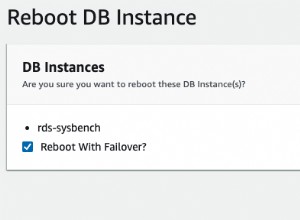Zobaczmy małą funkcję Oracle i podobny sposób w PostgreSQL.
Transakcja autonomiczna, co to jest?
Transakcja autonomiczna to niezależna transakcja, która jest inicjowana przez inną transakcję i jest wykonywana bez ingerencji w transakcję nadrzędną. Gdy wywoływana jest transakcja autonomiczna, transakcja inicjująca zostaje zawieszona. Kontrola jest zwracana, gdy autonomiczna transakcja wykona COMMIT lub ROLLBACK.
Przykład w Oracle:
Create two tables and one procedure as shown below.
create table table_a(name varchar2(50));
create table table_b(name varchar2(50));
create or replace procedure insert_into_table_a is
begin
insert into table_a values('Am in A');
commit;
end;
Lets test it here.
SQL> begin
2 insert into table_b values('Am in B');
3 insert_into_table_a;
4 rollback;
5 end;
6 /
PL/SQL procedure successfully completed.
SQL> select * from table_a;
Am in A
SQL> select * from table_b;
Am in B
W moim przykładzie powyżej linia 3 zatwierdziła linię 2, w której musi wycofać się zgodnie z linią 4. W moim przykładzie szukam bloków transakcyjnych, które mają zachowywać się niezależnie, aby osiągnąć to w Oracle musimy włączyć PRAGMA autonomi_transaction w Procedurze deklaracja zachowania się jako niezależny blok transakcyjny. Zróbmy ponownie:
Truncate table table_a;
Truncate Table table_b;
create or replace procedure insert_into_table_a is pragma autonomous_transaction;
begin
insert into table_a values('Am in A');
commit;
end;
SQL> begin
2 insert into table_b values('Am in B');
3 INSERT_INTO_TABLE_A;
4 rollback;
5 end;
6 /
PL/SQL procedure successfully completed.
SQL> select * from table_a;
NAME
----------
Am in A
SQL> select * from table_b;
no rows selected
Jak zrobić pracę w PostgreSQL?
Transakcje autonomiczne, są bardzo dobrze kontrolowane w Oracle. Podobnych funkcji nie ma w PostgreSQL, jednak można to osiągnąć za pomocą włamania za pomocą dblink. Poniżej znajduje się link, pod którym hack został dostarczony:
http://archives.postgresql.org/pgsql-hackers/2008-01/msg00893.php
create extension dblink;
create or replace function insert_into_table_a() returns void as $$
begin
perform dblink_connect('pragma','dbname=edb');
perform dblink_exec('pragma','insert into table_a values (''Am in A'');');
perform dblink_exec('pragma','commit;');
perform dblink_disconnect('pragma');
end;
$$ language plpgsql;
edb=# begin;
BEGIN
edb=# insert into table_b VALUES ('am in B');
INSERT 0 1
edb=# select insert_into_table_a();
insert_into_table_a
---------------------
(1 row)
edb=# select * from table_a;
name
---------
Am in A
(1 row)
edb=# select * from table_b;
name
---------
am in B
(1 row)
edb=# rollback;
ROLLBACK
edb=# select * from table_a;
name
---------
Am in A
(1 row)
edb=# select * from table_b;
name
------
(0 rows)
Czy to nie proste, dzięki dostawcy hakerów.




